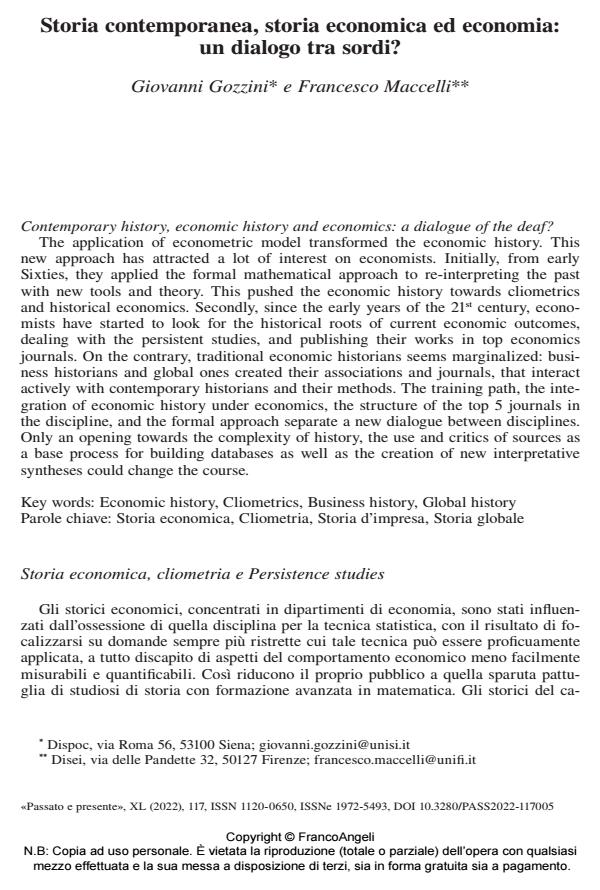Contemporary history, economic history and economics: a dialogue of the deaf?
Journal title PASSATO E PRESENTE
Author/s Giovanni Gozzini, Francesco Maccelli
Publishing Year 2022 Issue 2022/117
Language Italian Pages 18 P. 58-75 File size 145 KB
DOI 10.3280/PASS2022-117005
DOI is like a bar code for intellectual property: to have more infomation
click here
Below, you can see the article first page
If you want to buy this article in PDF format, you can do it, following the instructions to buy download credits

FrancoAngeli is member of Publishers International Linking Association, Inc (PILA), a not-for-profit association which run the CrossRef service enabling links to and from online scholarly content.
The application of econometric model transformed the economic history. This new approach has attracted a lot of interest on economists. Initially, from early Sixties, they applied the formal mathematical approach to re-interpreting the past with new tools and theory. This pushed the economic history towards cliometrics and historical economics. Secondly, since the early years of the 21st century, economists have started to look for the historical roots of current economic outcomes, dealing with the persistent studies, and publishing their works in top economics journals. On the contrary, traditional economic historians seems marginalized: business historians and global ones created their associations and journals, that interact actively with contemporary historians and their methods. The training path, the integration of economic history under economics, the structure of the top 5 journals in the discipline, and the formal approach separate a new dialogue between disciplines. Only an opening towards the complexity of history, the use and critics of sources as a base process for building databases as well as the creation of new interpretative syntheses could change the course.
Keywords: Economic history, Cliometrics, Business history, Global history
Giovanni Gozzini, Francesco Maccelli, Storia contemporanea, storia economica ed economia: un dialogo tra sordi? in "PASSATO E PRESENTE" 117/2022, pp 58-75, DOI: 10.3280/PASS2022-117005